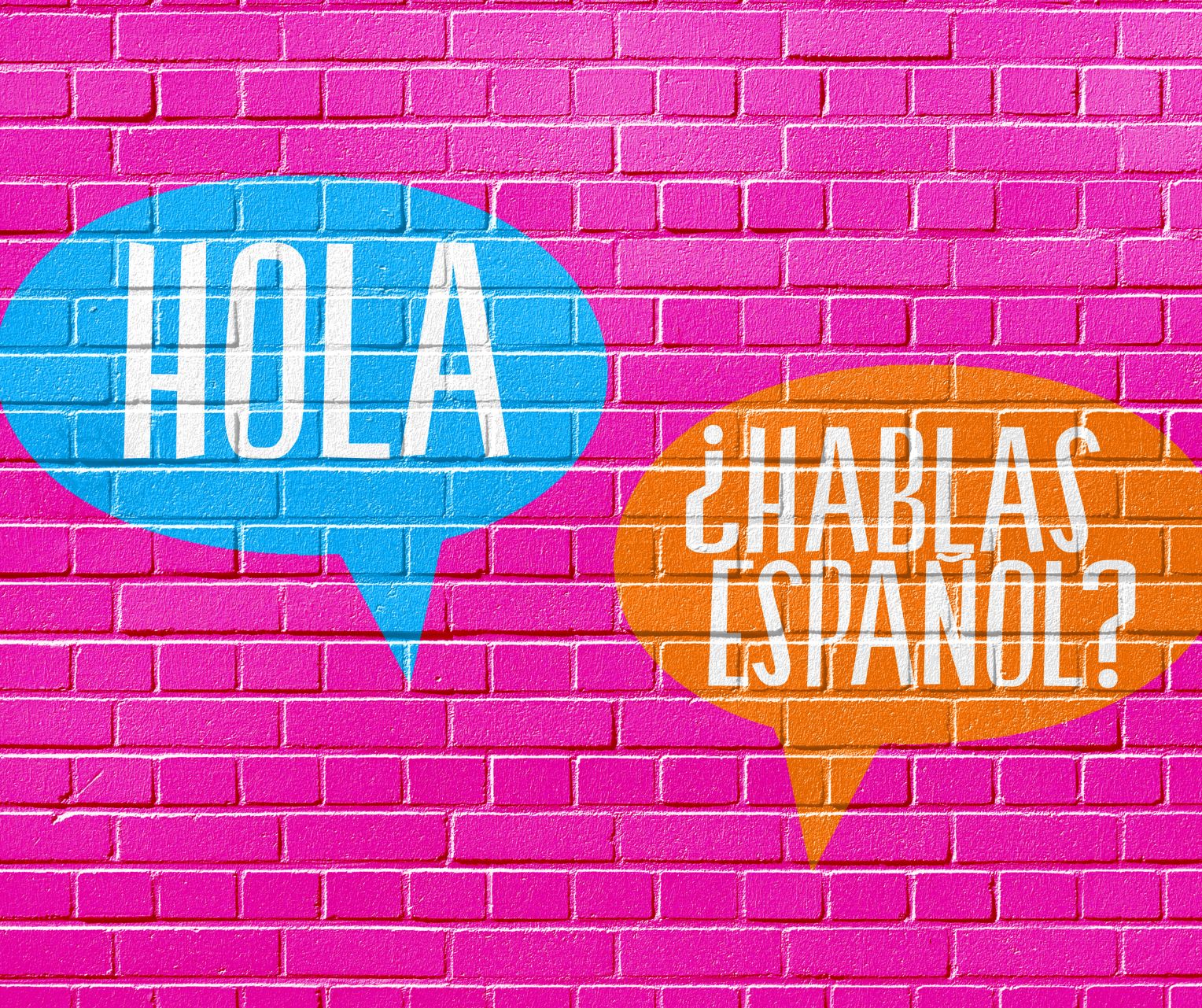Spanish IB Extended Essay Guide: How to Succeed in Your Language A or B EE

Maria is a certified teacher and has been teaching Spanish since 2011. She holds a MA in Spanish and Latin American literature and an MA in Spanish as a Foreign Language. Furthermore, she is an experienced IB examiner for Spanish Language B and Language A, both the Literature and Language & Literature courses and is an expert in guiding students to the highest standards in their Spanish IB Extended Essay.
Article revised and updated by Maria, July 11th, 2025.
Writing an IB Spanish Extended Essay can feel like a big task, especially when unsure of the requirements and expectations. Whether you’re studying Spanish as your Language A or B subject, this guide breaks everything down into manageable steps, so you can confidently plan, research, and write your EE while meeting the official IB criteria.
Need help with IB Spanish?
Introduction
This guide is designed for students aiming to succeed in their Spanish Language A or B Extended Essays. Whether you’re passionate about Spanish literature, cultural analysis, or improving your language skills, success relies on clear planning, research, and language precision.
The article covers the Spanish Extended Essay, its differences between language levels, topic selection, and meeting assessment criteria. You’ll also find tips, research question examples, and guidance on citing sources in your IB Spanish essay.
What Is the Spanish IB Extended Essay?
The Spanish extended essay is a 4,000-word research paper written on a focused topic within the subject of Spanish, either as Language A (native-level) or Language B (second-language).
Differences Between Language A and Language B Essays
The differences between Language A and Language B Extended Essays stem from their focus, analysis depth, and the types of sources used.
Language A Extended Essays
Language A essays focus on in-depth analysis of literary texts or language-related concepts, such as novels, plays, or poems. In Language A: Literature, the essay centres entirely on literary texts, examining aspects like narrative techniques, themes, and stylistic choices in Spanish works.
In Language A: Language and Literature, the scope is broader, encompassing literary texts and media, as well as cultural and non-literary content. While both tracks involve rigorous assessment, the approach and types of sources used differ depending on whether the focus is on literary analysis or the relationship between language and culture.
- Level of Analysis: You’re expected to bring a high level of analysis to your essay. This means you’ll dive deep into the meanings, symbols, and messages in the texts. More than summarising what happens in the story, it’s understanding the layers behind the text and its cultural or linguistic implications.
- Research: The research is generally more focused on the text, with secondary sources that discuss literary analysis or the cultural and historical context surrounding the text. This could involve scholarly articles, critical essays, or research papers from reputable sources.
Language B Extended Essays
Language B Extended Essays focus on cultural phenomena, media, or language acquisition. While still related to language, these essays allow you to take a broader look at Spanish-speaking cultures and the use of Spanish in real-world contexts.
- Focus Areas: Your essay might explore how language is used in the media, such as films, advertisements, or social media, or you could focus on the cultural aspects of a Spanish-speaking country. It could also involve language acquisition such as how people learn the language, or the cognitive processes behind learning a second language.
- Level of Analysis: The level of analysis here is still important, but the expectations for linguistic or literary insight aren’t as high as they are in Language A. You’ll need to demonstrate an understanding of Spanish-speaking cultures and a moderate level of proficiency in the language itself.
- Research: The research here tends to rely more on Spanish-language sources, such as newspapers, films, or academic papers written in Spanish. This can help you engage more directly with the culture you’re studying, providing authentic context for your arguments.
Why Choose Spanish for Your Extended Essay?
Choosing Spanish for your studies can be great if you’re passionate about Hispanic culture, society, or literature. If you enjoy exploring different cultures and languages, Spanish offers a rich opportunity to dive into those areas. It’s also ideal if you’re confident in your reading comprehension and writing skills, as these will play a significant role in your success.
Additionally, studying Spanish is a fantastic way to develop your IB academic writing style, whether in your first or second language. If you plan to pursue university courses in languages, literature, or international studies, Spanish can be a strong foundation that will serve you well in your future academic journey.
How to Choose a Topic for a Spanish IB Extended Essay
Selecting your topic is one of the most important decisions you’ll make.
Criteria for an Effective Topic
A strong Extended Essay topic should meet several key criteria:
- Focused and Manageable – It should be narrow enough to explore in-depth within 4,000 words.
- Relevance to the Spanish Curriculum – Your topic should relate to the Spanish language or culture, with strong links to the Language A or Language B curriculum.
- Culturally or Textually Rich – You want a topic that will allow you to conduct in-depth analysis and access a wealth of resources (books, academic papers, media).
- Personally Interesting – Pick something that excites you! It’s much easier to stay motivated when genuinely curious about the topic.
- Analytical Potential – Your topic should lend itself to analysis, not just a descriptive summary. You should be able to build a clear argument.
By following these criteria, you’ll ensure your topic is focused, meaningful, and capable of supporting a thorough analysis.
Examples of Strong Spanish EE Topics
When choosing an IB Spanish Extended Essay topic, it’s important to select a subject that aligns with the specific requirements of the course. Here are some examples of essay topics that can guide you:
Here are some examples of possible topics to get you started:
Language A: Literature
- “The Role of Women in Don Quixote by Miguel de Cervantes.”
- “The Representation of Class in La casa de Bernarda Alba by Federico García Lorca.”
Language A: Language and Literature
- “The Impact of Spanish Television in Shaping Modern Spanish Identity.”
- “Analysing the Use of Symbolism in Spanish Advertising.”
Language B
- “The Evolution of Traditional Spanish Music in Modern Media.”
- “The Influence of Social Media on Youth Culture in Spain.”
Each of these topics is designed to help you demonstrate a strong understanding of both the language and the culture, while also meeting the academic expectations of the IB programme.
Common Mistakes to Avoid When Choosing a Topic
Many students fall into the trap of choosing a topic that is too broad, lacks available resources, or doesn’t allow for analytical thinking. Here’s what Maria advises to avoid:

- A Topic that’s Too Broad: Don’t pick a topic like “The Role of Women in Spanish Society.” This is far too broad and won’t allow you to conduct a detailed analysis. Maria explains:
“One of my students recently talked about women, but she focused on a specific topic : ¿De qué manera se retratan las vicisitudes que vivieron las mujeres de “los perdedores” en la novela La Plaza del Diamante de Mercè Rodoreda y en La Voz Dormida de Dulce Chacón?”
- A Topic Without Sources: Make sure you can find enough Spanish-language sources. You may struggle during the research phase if you choose a topic with limited resources.
- A Descriptive Topic: Avoid topics that only lead to description. Your Extended Essay needs to show analytical depth. For example, “Las mejores novelas de García Márquez” does not lend itself to analytical depth.
- Non-Spanish Texts: If you are writing a literary essay for Language A, your text must be originally written in Spanish. A translation won’t meet the criteria. You can, though, pick a text translated from Spanish and compare it with the original Spanish source.
Avoid these common mistakes, as choosing a well-defined and researchable topic is key to setting yourself up for success in your Extended Essay.
Planning and Research Tips
Solid planning helps you avoid panic later on. Here’s how Maria suggests approaching it step by step.
Crafting a Precise and Insightful Research Question
A good research question is key to a successful Extended Essay. Your research question should:
- Be focused: Avoid vague or overly broad questions. A focused research question ensures you can address your topic thoroughly within the 4,000-word limit without veering into unrelated areas.
- Be relevant: The question should be tied to the Spanish language or culture. This is essential for ensuring your essay meets the IB’s expectations and curriculum requirements.
- Be analytical: It should allow for discussion, analysis, and critical thinking. Your research question should go beyond surface-level exploration and encourage you to examine multiple perspectives and complexities.
Building a Clear Essay Outline
Your outline should follow a logical flow. Here’s a simple but effective outline:
Introduction: Define your research question and context. This sets the stage for your essay by explaining the significance of the topic and the direction of your analysis. Be sure to provide enough background to help the reader understand why your research question is important.
Body: Present evidence in sections or themes, followed by interpretation. Each section should focus on a specific aspect of your research question, using evidence to support your analysis and further your argument. Ensure that the flow between sections is logical and maintains a strong connection to the research question.
Conclusion: Answer the research question and summarize your insights. The conclusion should reflect on the findings and answer the research question definitively, highlighting any key insights or implications. Avoid introducing new evidence in this section.
Use your outline to keep your arguments focused and avoid repetition.
Finding Spanish-Language Sources and Cultural Materials
Finding reliable Spanish-language sources and cultural materials is crucial for grounding your analysis in authentic, relevant, and diverse perspectives that enhance your Extended Essay. The most important thing, says Maria, is to consider a topic that genuinely interests you—perhaps feminism, the mechanisms of power, the individual’s struggle to be understood, or coming-of-age. Additionally, think about a work written in Spanish that has significantly impacted you.
“Remember to check with your teacher for suggestions, but always keep in mind that you are the one who will be doing the research and writing the essay. Therefore, the chosen topic must resonate with you 100% and motivate you to undertake a research project like the Extended Essay (EE).”
You may use a mix of:
Literary texts or media in original Spanish:
Analysing texts in their original Spanish preserves meaning and context, ensuring accurate and in-depth analysis. This is your main source, emphasises Maria.
“For example, a student of mine compared Rosalia’s album “El mal querer” with a medieval novel called “Flamenca”. Her research question was ¿Cómo ha inspirado una novela prototipo del amor cortés al álbum conceptual de Rosalía, una artista del siglo XXI?”
Academic papers and essays (Google Scholar, JSTOR):
Peer-reviewed academic sources offer scholarly insights and context to support your arguments and ensure academic rigor.
Author interviews, cultural critiques, or film analyses:
These sources provide unique perspectives and deepen your analysis of cultural or social issues, enriching your research. Maria says it’s a great idea to search for interviews with the authors of the cultural artifact or literary work, particularly if they are still living.
“My students often acknowledge that today, it is easy to find insightful interviews or rigorous podcasts that can provide additional information. These can be conveniently accessed, for instance, during your morning trip to school. Such a level of engagement can significantly enhance the depth of your research and will be evident in the final academic work.”
One of Maria’s students once wrote an EE about Roma, a Mexican film.
“Search for inspirations in Spanish and LATAM indie movies of recent years; this can really help. What are the main topics? Is this an original script, or does it come from a book? How could I write an academic essay about these films? Can I compare and contrast them with something else, perhaps?”
Official publications, especially for Language B cultural essays:
Government reports and cultural surveys are reliable for exploring societal trends and cultural movements in Spanish-speaking countries.
Make sure your sources support an analytical approach:
Choose sources that contribute to your argument and provide critical insights, rather than just summarising information.
It’s important to make sure your sources support an analytical approach.
Organising Your Research Logically
Use a research journal or spreadsheet to stay organised throughout the research phase. It helps you track sources, quotes, and reflections for a more efficient writing process. Maria emphasises that in academic writing, the strength and credibility of an argument are directly tied to the quality of the evidence presented.
“It is paramount to exclusively use academic papers, scholarly articles, and other sources that are demonstrably based on robust evidence and originate from reputable sources. This principle ensures the integrity of your research and the validity of your claims.”
1. Sources Consulted
List every source you consult, including bibliographic details like author, title, and publication date. This ensures easy reference and accurate citation when needed.
2. Key Quotes or Ideas
Record significant quotes or ideas from your sources that directly support your research question. These will be invaluable when integrating evidence into your essay and will help strengthen your argument. Be sure also to note the page numbers for easy citation later.
3. Page Numbers for Citation
Note the specific page numbers for any quotes or references you use from your sources. This ensures proper citation and makes referencing easier when writing your essay. Add it to your reference list as you go along.
4. Thoughts or Reflections Linked to Your RPPF (Reflection on Planning and Progress Form)
Track your reflections on the research process, challenges, and developments in your log. These thoughts will help you complete your RPPF and reflect on your progress. Regularly reviewing these reflections will help you stay focused and make necessary adjustments as you progress with your essay.
Organising your research and planning early on makes it significantly easier to manage the writing phase, as it provides a clear structure, ensures that all necessary materials are readily available, and reduces the stress of last-minute scrambling.
Maria emphasises,
“Remember the reflections count up to 6 points. Look at the mark scheme and make sure you adhere to the success criteria.”
Structure of the Spanish IB Extended Essay
Understanding the official IB Extended Essay structure and format is critical for scoring well.

Introduction: Stating Your Research Question
Clearly state your research question and explain its relevance within the scope of your essay. Keep it concise, aiming for 350 to 450 words, while outlining your approach without going into too much detail.
Body: Presenting and Analysing Evidence
Divide the body into sections, each focusing on a distinct point or theme relevant to your research question. Provide supporting evidence and analysis, quoting original Spanish texts when applicable and analysing their style, tone, and themes.
Maria explains that,
“A strong academic essay hinges on well-constructed paragraphs, each opening with a powerful topic sentence. This opening statement acts as a miniature thesis for the paragraph, clearly articulating its main point and directly linking back to one of your essay’s primary focuses. Think of it as a signpost for your reader, guiding them through your argument.”
Conclusion: Reflecting on Findings
Revisit your research question in the conclusion and summarise your main findings. Briefly reflect on any limitations encountered and suggest areas for further study, avoiding introducing new evidence. Maria explains that this demonstrates a forward-thinking approach and an understanding that research is an ongoing, iterative process.
“Beyond merely restating findings, a philosophical reflection can significantly enrich the conclusion, particularly if the topic holds broader societal implications. This involves considering how the research resonates with contemporary issues and offers insights into the human condition or modern challenges.”
When writing a formal academic essay, Maria insists it’s crucial to maintain an objective and authoritative tone. This means avoiding the use of first-person pronouns such as “I,” “me,” “my,” “we,” “us,” and “our.” The goal is to present information and arguments in a way that emphasises the research itself, rather than the researcher’s personal opinions or experiences.
“Instead of saying “I believe this research shows,” consider phrases like “This research suggests,” or “The findings indicate.” Similarly, instead of “We conducted the experiment,” opt for “The experiment was conducted,” or “The researchers conducted the experiment.””
Citations and Bibliography in MLA/APA/Chicago
Use one consistent citation style throughout your essay, such as MLA, APA, or Chicago. Include in-text citations and a final bibliography, ensuring that all cited sources are referenced accurately.
Consider using citation tools like Zotero, EasyBib, or Google Docs’ built-in citation tool. Noodle Tools is also handy, but in any case, start as soon as you start writing to avoid last-minute rush.
Writing Tips for a High-Scoring Spanish EE
Clarity, accuracy, and academic depth are vital to ensure your argument is coherent, well-supported by evidence, and meets the intellectual standards required for a high-quality Extended Essay.
Maintaining Academic Tone in Spanish
Make sure your Spanish is formal and clear throughout your essay. Avoid using slang, idioms, or overly casual phrases, as these can undermine the academic tone of your writing. For example, instead of saying “pienso que” (I think that), use “se puede argumentar que” (it can be argued that) .
Similarly, replace “muy interesante” (very interesting) with more formal terms like “significativo” (significant) or “impactante” (impactful) to maintain a polished academic style.
Improving Grammar and Vocabulary Accuracy
Use varied sentence structures to avoid repetition and ensure correct verb conjugations and noun-adjective agreement to boost your grammar and vocabulary. Incorporate subject-specific terms related to literature, linguistics, or culture, and use tools like WordReference and Linguee for precision. You can also have someone fluent in academic Spanish proofread your draft for accuracy.
Using the Supervisor’s Feedback Effectively
Your supervisor is a key resource. Their feedback is essential for improving your essay. Use it to strengthen your argument, clarify ideas, and correct formatting or citation errors. Keep a log of their suggestions and ensure you make time for revisions after each check-in.
If you’re finding it challenging to incorporate your supervisor’s feedback, working with an experienced IB Spanish tutor can be a great solution. TutorsPlus offers personalised IB Spanish tuition tailored to your specific needs and is especially helpful for refining your Extended Essay.
Zurine Aperribay gave this wonderful testimonial about Maria:
“We had Maria as a Spanish-A teacher for our son’s IB Diploma and we cannot recommend her enough. She’s a very dedicated teacher and an excellent person who is always ready to help. We wouldn’t hesitate to hire her again.”
Similar to how we helped her son, we can offer the same support for your Spanish IB and Extended Essay needs.
Conclusion
Final Advice for Scoring Well in Your Spanish IB EE
In summary, the IB essay assessment guide expects a focused research question, strong subject understanding, and analytical thinking supported by evidence. It also requires a logical structure, academic presentation, and clear engagement through reflection. Meeting all five criteria is essential for achieving the top grade band.
Staying Organised and Motivated Throughout the Process
To stay on track, set weekly goals such as finishing your outline, writing a set number of words, or revising citations. Schedule reflection sessions in advance, take breaks when needed, and stay motivated by remembering why you chose your topic. Follow this guide, apply the tips, and take it one step at a time to ensure your success.If you’re feeling uncertain or aiming for excellence, don’t hesitate to reach out to us at 022 731 8148 or . ¡Tú puedes!








